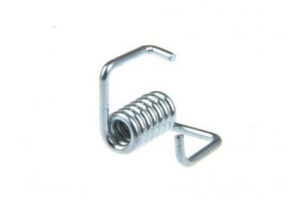Torsion Spring Testing: Ensuring Quality and Performance

Torsion springs play a vital role in countless mechanical applications, providing crucial support and functionality. As manufacturers strive to deliver products of the highest quality and longevity, rigorous torsion spring testing procedures are integral. This article will explore the importance of torsion spring testing, its key parameters, and common testing methods employed in the industry.
1. Why is Torsion Spring Testing Necessary?
Torsion springs are subject to significant forces and repetitive cycles, making their reliability a top priority. Testing these springs ensures that they meet performance standards and guarantees their safe and efficient operation. By identifying potential weaknesses, manufacturers can address design flaws, select appropriate materials, and enhance overall product durability.
2. Parameters for testing:
To evaluate the quality and performance of torsion springs accurately, several crucial parameters need to be considered during testing:
a. Torque Capacity: The ability of the spring to withstand rotational force without permanent deformation or failure is essential. Testing involves applying progressively increasing torque until failure occurs or the desired fatigue life is achieved.
b. Fatigue Life: Determining the number of cycles a torsion spring can endure before failure is crucial. Accelerated life tests, such as the S-N curve analysis, help estimate the expected lifespan under various operating conditions.
c. Spring Rate: The spring rate describes the relationship between applied torque and angular deflection. Accurate measurement of this parameter ensures proper load distribution and consistent performance.
d. Surface Integrity: Inspecting the surface condition and finish of torsion springs is vital to detect potential defects, such as cracks, corrosion, or other imperfections that may compromise performance or lead to premature failure.
3. CommonTesting Methods:
To ensure reliable and consistent performance, manufacturers employ various testing methods, including:
a. Load Testing: This involves subjecting torsion springs to various loads and analyzing their response. By measuring angular deflection and torque at specific load points, manufacturers can validate design assumptions and evaluate spring behavior under different conditions.
b. Fatigue Testing: Replicating real-world operating conditions, fatigue testing assesses a torsion spring’s ability to endure repeated cycles without failure. This helps establish the spring’s expected lifespan and enables designers to optimize their products accordingly.
c. Dimensional Inspection: Precise measurement of critical dimensions, such as wire diameter, coil pitch, and end configurations, ensures compliance with design specifications. Advanced metrology techniques, including optical comparators and coordinate measuring machines (CMMs), facilitate accurate dimensional analysis.
d. Non-Destructive Testing (NDT): Utilizing techniques like dye penetrant testing or magnetic particle inspection, NDT detects surface or subsurface defects without damaging the torsion springs. These methods are especially useful for identifying cracks, inclusions, or other flaws invisible to the naked eye.
Conclusion:
Torsion spring testing serves as a crucial step in maintaining quality control during manufacturing processes. By evaluating parameters such as torque capacity, fatigue life, spring rate, and surface integrity, manufacturers can ensure the reliability and longevity of their products. Through various testing techniques such as load testing, fatigue testing, dimensional inspection, and non-destructive testing, manufacturers are empowered to deliver torsion springs that meet or exceed customer expectations. Ultimately, rigorous testing plays a vital role in enabling safe and efficient operation across numerous mechanical applications.






